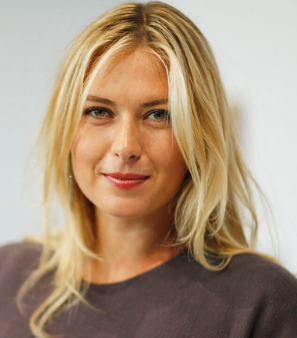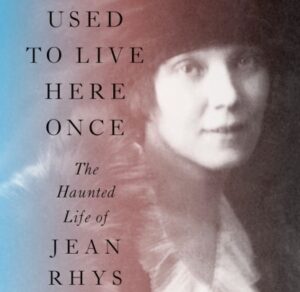BEATRICE BORROMEO’S MOTHER WELCOMES US TO LADY OF THE NIGHT, HER PARADISE IN PUNTA DEL ESTE
Paola Marzotto is a fascinating woman, one who combines elegance and class with an unexpectedly forceful, warm per sonal i ty. The younger generation know her as the mother of Beatrice Borromeo, wife of Princess Caroline of Monaco’s son Pierre Casiraghi.
But long before her daughter’s marriage linked her to the Grimaldis, Paola was already a leading light in society. Her aristocratic family founded one of Italy’s largest fashion companies, which once owned Valentino and Hugo Boss. Her mother was style icon Countess Marta Marzotto, who, since her passing in 2016, is much missed in cultural and artistic circles around the world.
Like many Europeans, Marta and Paola both fell in love with Punta del Este, “Uruguay’s St Tropez”, and spent the northernhemisphere winters there. And in 2010, Paola decided to build a home for her mother in the coastal resort. The result was a graceful, colonial-style mansion poetically named Lady of the Night.
Now, despite owning homes in various countries, Paola has settled permanently in Punta del Este. It is her paradise, she explains, even if it is far away from her two children, Beatrice and Carlo Borromeo – who lives in Italy with his wife, fashion designer Marta Ferri – and her grandchildren.
Fi z z ing wi th ideas and enthusiasm, Paola is a woman of many talents. Having worked as a journalist, model, couturier and politician, she now pours her passion into photography and, above all, to saving the planet, as she tells us here.
Paola, why did you decide to move here for good? “Thanks to technology, we’re lucky enough to be able to work from wherever we want. And I can’t live in a city any more, it’s horrible, what with the pollution, the traffic, the violence… “I love my adopted country. I have wonderful friends who have stayed here, like me, through the pandemic. We share the same values and lifestyle.”
What do you like most about living in Uruguay? “It is sparsely populated with very beautiful landscapes, and it has a stable government, which handled the Covid crisis well. But the most captivating thing is the light – the sunrises and sunsets are amazing.”
How would you describe the house? “It’s a colonial-style mansion, over the top, just like my mother, but also magnificent, as she was too. She used to say that for me it was a tribute, while for her it was her mausoleum. It was a joke, but it’s true.
“This is a perfect house for entertaining, and we’ve had many dances and parties here over the years. Now, I hold the group activities of my Eye-V Gallery initiative here. Focusing on neonaturalist photography, the gallery has branches in Uruguay, Milan and New York and brings together artists from all over the world.”
Your mother was known as a great hostess… “Yes, she taught me the role. It requires a lot of dedication and a lot of love. You have to want to share, you have to love your friends more than yourself, and enjoy seeing them happy, discovering each other. “My mother and father were both very social people. Socialising used to be different, pure vitality and joy. Now it’s monopolised by social climbers and brands with their boring events. For us it was sheer enjoyment.”
How would you describe the decor here in Lady of the Night? “It’s relatively minimalist, simple and, as they say in South America, canchera [cool]. There are antiques and curiosities. I’ve got collections of art and Creole silverware, riding crops, stirrups, gourds… I designed the furniture myself, like the shelves and low tables made by local artisans in Creole style. As for the art, my mother, like my whole family, was a patron and collector of contemporary artists.
“My paternal grandfather, Gaetano Marzotto, a great Italian industrial ist, instituted the Marzotto Prize [1950-1968], and the house has works by some of the winners, such as Renato Guttuso, as well as photos by Julie Bergada and Ricardo Labougle and large-scale pieces by Uberto Gasche and Tony Meneguzzo. The art here isn’t a status symbol, it’s an integral part of the decor, as it always was in past centuries. “Decoration is something fundamental with me. I keep adding pieces, so it’s lucky we’ve run out of wall space! “In decor, as in dressing elegantly, balance is key.”
Do your children and grandchildren visit you here? “They used to come more frequently, especially Carlo and his family. But now it’s more complicated to travel… We’ll wait and see.”
What is your daily life here like? What do you spend most time on? “Every day I wait for the right moment to take photos. The eastern light is incredible, pure and evocative, and the rain and storms are great too. Every day is different. As a restless person, I find that photography is my active form of meditation. “I’ve been working for a year now on a series of photos called My Giverny, inspired by the Monet’s magical garden paintings. I have a pond full of water lilies that I follow as they transform through the seasons. “You can see my pictures on Instagram, at Paola Marzotto Eye-V Gallery.”
Do you still design clothes? “Only for myself and a few special people in my life. We need to buy less clothes and be more elegant. We’re losing the concept of style. These days, well-off women dress like rock stars. No one takes their body shape into account. “Older women dress as if they were in their 20s. A little dignity please! Once upon a time, we walked into Saint Laurent or Valent ino and came out beautiful. Now, we have to be beautiful to be able to carry off the clothes. It’s ridiculous!”
What are your greatest luxuries? “Clean air, healthy food and silence are the great luxuries of the third millennium.” Two years ago, at the beginning of the pandemic, you made an eyeopening trip to Antarctica. What struck you the most? “I went there because Carlo and his wife Marta had gone there for their honeymoon in 2013. Carlo was very insistent that I go, and I had reserved two years in advance, thinking of it as a visit to the last great refuge of nature.
“But when I got there, what struck me most was the lack of ice, not to mention the absence of animal s . I travel led on the icebreaker National Geographic Explorer, but there was no ice to break. I expected to walk on the pack ice, but there wasn’t any. The ship’s Filipino crew said: ‘We were in this bay two years ago, and the icebergs were huge, but now…’ It was a big shock.”
Is that how your recent photography exhibition came about? “Yes, from that moment on, Antarctica, Melting Beauty began to take shape in my head. It turned into an artistic project when I was invited to participate in the Venice Biennale in 2021. Then Maria Teresa Arredondo Waldmeyer, from Madrid’s Universidad Politécnica, or g ani s ed a photog r aphy competition with my Instagram hashtag, Better Earth than Mars, and an exhibition in the city. The exhibition was very well received by the public and will be touring internationally.
“I took the photos with my iPhone. I felt it was necessary to show what I saw because not everyone can afford to go to the Antarctic and I had the privilege (albeit a terrible one) of being able to see the destruction there with my own eyes.”
What can you tell us about your Eye-V Gallery initiative? “I’ve been an environmental and human rights activist my whole life, but there’s not much time left. We have to move and move fast. We have to stop consuming, fly by plane as little as possible, sign petitions, become active in every way. “That’s why I created Eye-V Gallery, a cultural enterprise that works as a foundation, promoting artists who have a strong connection with nature. Only by discovering the beauty, the harmony, the perfection of the natural world, will we want to save it and, by saving it, we’ll save humankind.”
You’ve said that when your children were young, you took them to clean up the beach during family holidays… “My own parents would stop the boat and throw us into the water to pick up plastic rubbish from the sea. “Later, my children and I would collect bags and bags of cigarette butts on the beach next to our house in Sardinia, and from their father’s estate, where they grew up. “But that kind of thing isn’t enough. We are all sinners, and we didn’t see this crisis coming. I’d never have thought that the situation would be so serious.”
What actions do you take in your daily life? “I have my own vegetable garden, and I changed my car for a Chinese electric one, which is relatively cheap and very good. “I became a vegan for the third time, although I had to give that up because it affected my health. “I fly very little now, only when I go to see my family. I am rewilding on my land; I’ve planted two thousand native trees and I keep adding species. “When balance is restored, the problems disappear.”



Average Rating